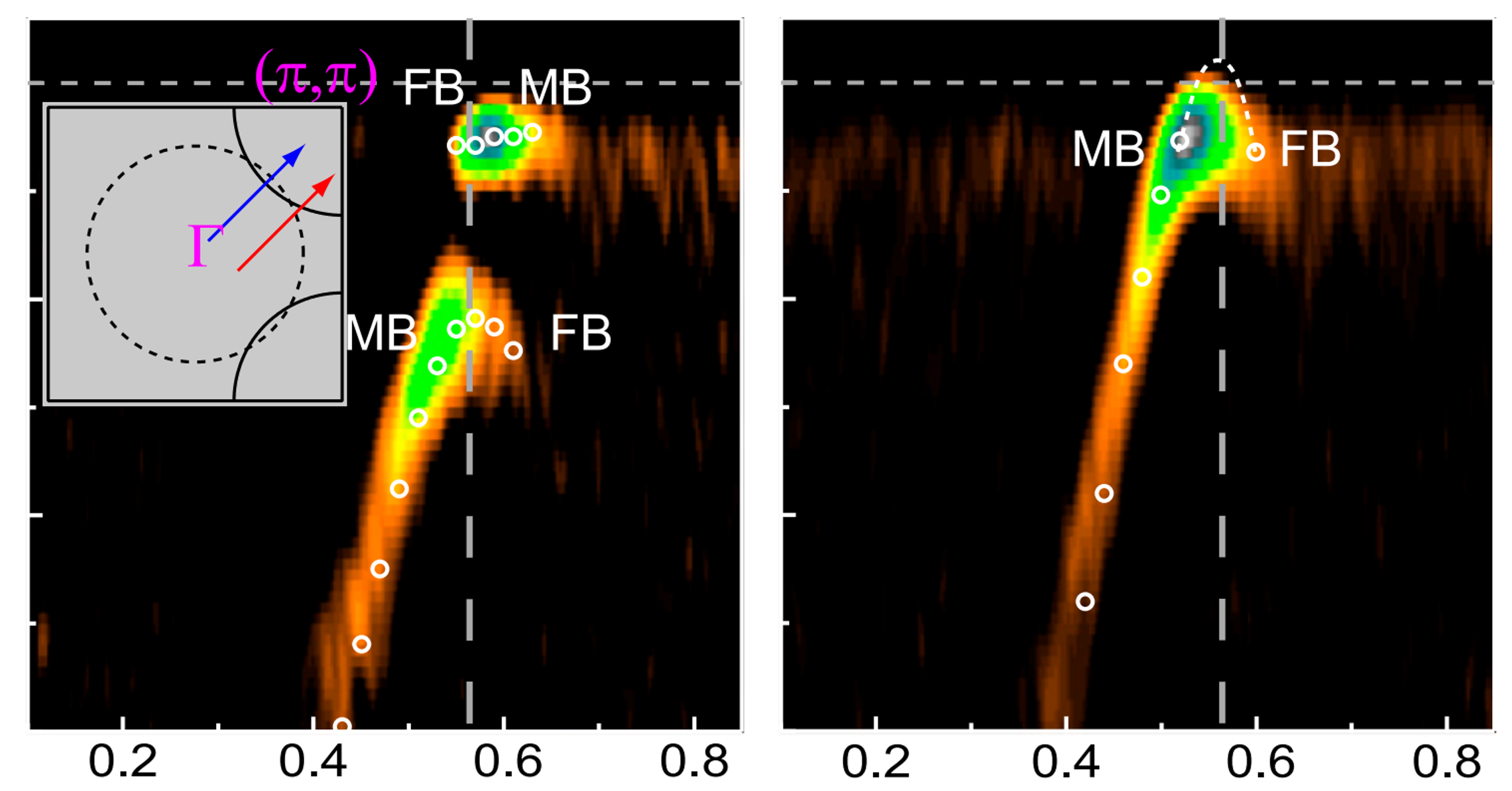
In electron-doped cuprate Nd2−xCexCuO4 (NCCO), an unexpected FS reconstruction has been observed in optimal- and overdoped regime (x = 0.15–0.17) by quantum oscillation measurements (QOM). However, neutron scattering suggests that the antiferromagnetic (AFM) long-range order, which is believed to reconstruct the FS, vanishes before x = 0.14. To reconcile the conflict, a widely discussed external magnetic-field–induced AFM long-range order in QOM explains the FS reconstruction as an extrinsic property.
We observed evidence of FS reconstruction in optimal- and overdoped NCCO through ARPES experiments. The observed FSs are in quantitative agreement with QOM, suggesting an intrinsic FS reconstruction without field. This reconstructed FS, despite its importance as a basis to understand electron-doped cuprates, cannot be explained under the traditional scheme. Furthermore, the energy gap of the reconstruction decreases rapidly near x = 0.17 like an order parameter, echoing the quantum critical doping in transport. The totality of the data points to a mysterious order between x = 0.14 and 0.17, whose appearance favors the FS reconstruction and disappearance defines the quantum critical doping.
Junfeng He et al., Proceedings of the National Academy of Sciences 116, 3449 (2019)
 A major complication in cuprates is the presence of other ordering tendencies intertwined with superconductivity. These orders are affected by the same underlying interactions that mediate superconductivity. Therefore, elucidating the nature of the intertwined orders is essential for us to either disentangle superconductivity from other orders or understand the superconducting mechanism. Charge order is such an example, which is intertwined with superconductivity in various families of cuprates. While coupled with the lattice and showing different characteristics in different materials, the charge order is generally conceived to be quasi-two-dimensional in cuprates. However, on a heterostructure of YBa2Cu3O7-x and La0.7Ca0.3MnO3, we have observed a 3D electronic (charge-like) supermodulation with RIXS. This finding sheds light on the nature of charge order in cuprates as well as the interaction between superconductivity (YBCO) and ferromagnetism (LCMO) in the heterostructure.
A major complication in cuprates is the presence of other ordering tendencies intertwined with superconductivity. These orders are affected by the same underlying interactions that mediate superconductivity. Therefore, elucidating the nature of the intertwined orders is essential for us to either disentangle superconductivity from other orders or understand the superconducting mechanism. Charge order is such an example, which is intertwined with superconductivity in various families of cuprates. While coupled with the lattice and showing different characteristics in different materials, the charge order is generally conceived to be quasi-two-dimensional in cuprates. However, on a heterostructure of YBa2Cu3O7-x and La0.7Ca0.3MnO3, we have observed a 3D electronic (charge-like) supermodulation with RIXS. This finding sheds light on the nature of charge order in cuprates as well as the interaction between superconductivity (YBCO) and ferromagnetism (LCMO) in the heterostructure.
Junfeng He et al., Nature Communications 7, 10852 (2016)
A central issue in high temperature superconductivity is to unravel the electron-boson coupling which might contribute to the electron pairing either directly or indirectly. Bosonic modes which are coupled with electrons manifest themselves as dispersion anomalies in the electronic structure. Among those revealed by ARPES, one prominent case is the dispersion kink along (0,0) - (π,π) nodal direction of cuprate superconductors. This nodal kink is found to be at ~70 meV which is with. On the other hand, near the (π,0) antinodal region, a clear dispersion kink at ~40 meV has also been identified. The different energy scales lead to a long-standing puzzle about their relationship. In particular, how does the 70 meV nodal kink evolve into the antinodal 40 meV kink when the momentum gradually moves from the nodal to the antinodal regions? By utilizing the laser ARPES system with super-high energy resolution, we have revealed for the first time that in a large area of momentum space in the Bi2212 high temperature superconductor. The ~78 meV energy scale is observed over the Fermi surface from nodal to antinodal regions with nearly a fixed energy, while the other energy scale evolves from the antinodal region to the nodal region with its energy varying from ~40 to ~70 meV. This work has established a clear case that scientific progresses can be made by the advances in instrumentation: the long-standing puzzle is resolved by experiments with improved resolution.
Junfeng He et al., Phys. Rev. Lett. 111, 107005 (2013)